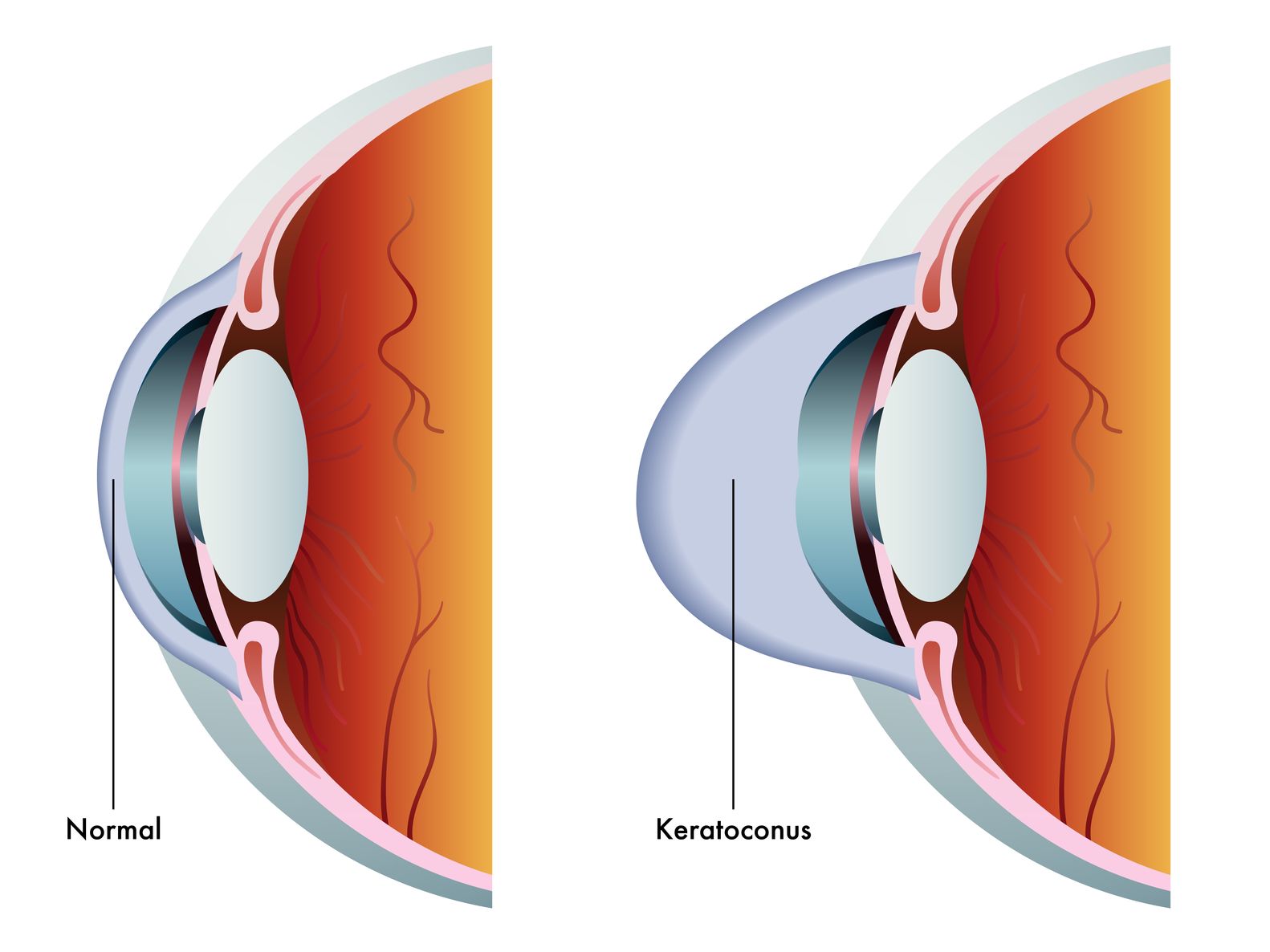
What is Keratoconus?
Keratoconus is a disease of the cornea of the eye. The cornea is the dome-shaped, transparent lens in our eye which is responsible for focusing our vision. In healthy condition, the cornea is smooth and regularly curved. But in Keratoconus, the central area of the cornea becomes weak and thin. This allows the eye to ‘bulge’ in an irregular manner. The result is distorted vision. Keratoconusnormally starts during adolescence and develops gradually for years before stabilizing. It is estimated to affect one person in every 2000.
Keratoconus Symptoms
· Poor focusing- the patient will have difficulty in focusing.
· Distorted Vision- Vision will be distorted.
· Distorted bulging-Close examination will reveal irregular bulging of the cornea.
Diagnosis of Keratoconus
Focusing becomes impaired. The initial diagnosis is normally an astigmatism. Examination of the eye structure will reveal irregular bulging. The defect may be present in one or both eyes.
Treatment of Keratoconus
There are numerous modes of treatment. The exact treatment must be decided by the experts according to the conditions of the individual case, considering the stage of progression, the age of the patient, and his or her lifestyle, amongst many other factors. These are:
· Rigid Contact lenses- Rigid, gas-permeable (RGP) contact lenses are a popular treatment when glasses are no longer useful. However, RGP lenses need effective production and cannot be given to those with deficient tear output.
· Collagen Cross-Linking (CXL)- It is a non-surgical technique adapted from dentistry. Corneal structures are made to adhere better to each other. The effect is something like strengthening of a fabric. Riboflavin chemical (vitamin B-12) is applied to the corneal region and a UV-A laser light shown on it to enhance the generation of collagen strands, thus strengthening the structure.
· Intra-corneal Rings (or segments)- These are small, semicircular, clear plastic rings of different thicknesses, which get inserted into the cornea at the outer edges. The insertion of these corneal rings helps smoothen the curvature and can correct myopia.This treatment is effective in stopping or slowing down the progression of keratoconus. It is a surgical procedure, but no tissue is removed and involves no ablation (burning away) of tissue. Femtosecond lasers are used.
· Advanced Topographic Guided Laser Treatment(T-CAT) is a very precise, computer-controlled method of reducing the corneal irregularity. It is followed by cross-linking to stabilize the changes to the curvature.
· Corneal graft surgery- In this technique,defective corneal tissue is removed and healthy tissue implanted. As many as 90% patients are known to obtain great improvement in vision.